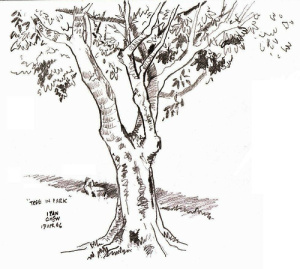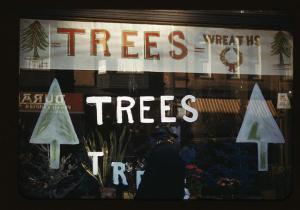Part One: Reading Media Texts
5 Signs and Signifiers
mediatexthack
Let’s start with a really simple example. Take a look at these three things:



These signs all ‘stand in’ for the idea of a tree. But they do so in different ways. We generally categorize signs into three types:
- Iconic signs – icons are signs where meaning is based on similarity of appearance. So our drawing of our tree stands in for the notion of ‘tree’ based on a crude similarity of appearance.
- Indexical signs – Indexical signs have a cause-and-effect relationship between the sign and the meaning of the sign. There is a direct link between the two. So a leaf might be an indexical sign.
- Symbolic signs – these signs have an arbitrary or conventional link. The word tree, t-r-e-e only comes to stand in for the notion of tree because of the conventions of our language. In another convention, the symbolic sign for tree might be ‘arbor’ (German) or ‘木’ (Japanese)
In each case, the sign can be broken into two parts, the signifier and the signified. The signifier is the thing, item, or code that we ‘read’ – so, a drawing, a word, a photo. Each signifier has a signified, the idea or meaning being expressed by that signifier. Only together do they form a sign. There is often no intrinsic or direct relationship between a signifier and a signified – no signifier-signified system is ‘better’ than another. Language is flexible, constructed, and changeable. de Saussure uses the word ‘arbitrariness’ to describe this relationship.
A good example is the word ‘cool.’ If we take the spoken word ‘cool’ as a signifier, what might be the signified? In one context or situation, cool might refer to temperature. But in another, it might refer to something as ‘stylish’ or ‘popular’. The relationship between signifier and signified can change over time and in different contexts.
This is important, because signs are understood and encoded in context. As with the words ‘’cool,’ the relationship between signifier and signified is made meaningful in context. This area starts by looking at signs in isolation, but as you become more confident with semiotics, you will start to look at signs as part of a sign system.
Discussion
- What is the relationship between a signifier and the signified?
- What might be an example of an iconic, indexical and symbolic sign for the idea of your pet?

